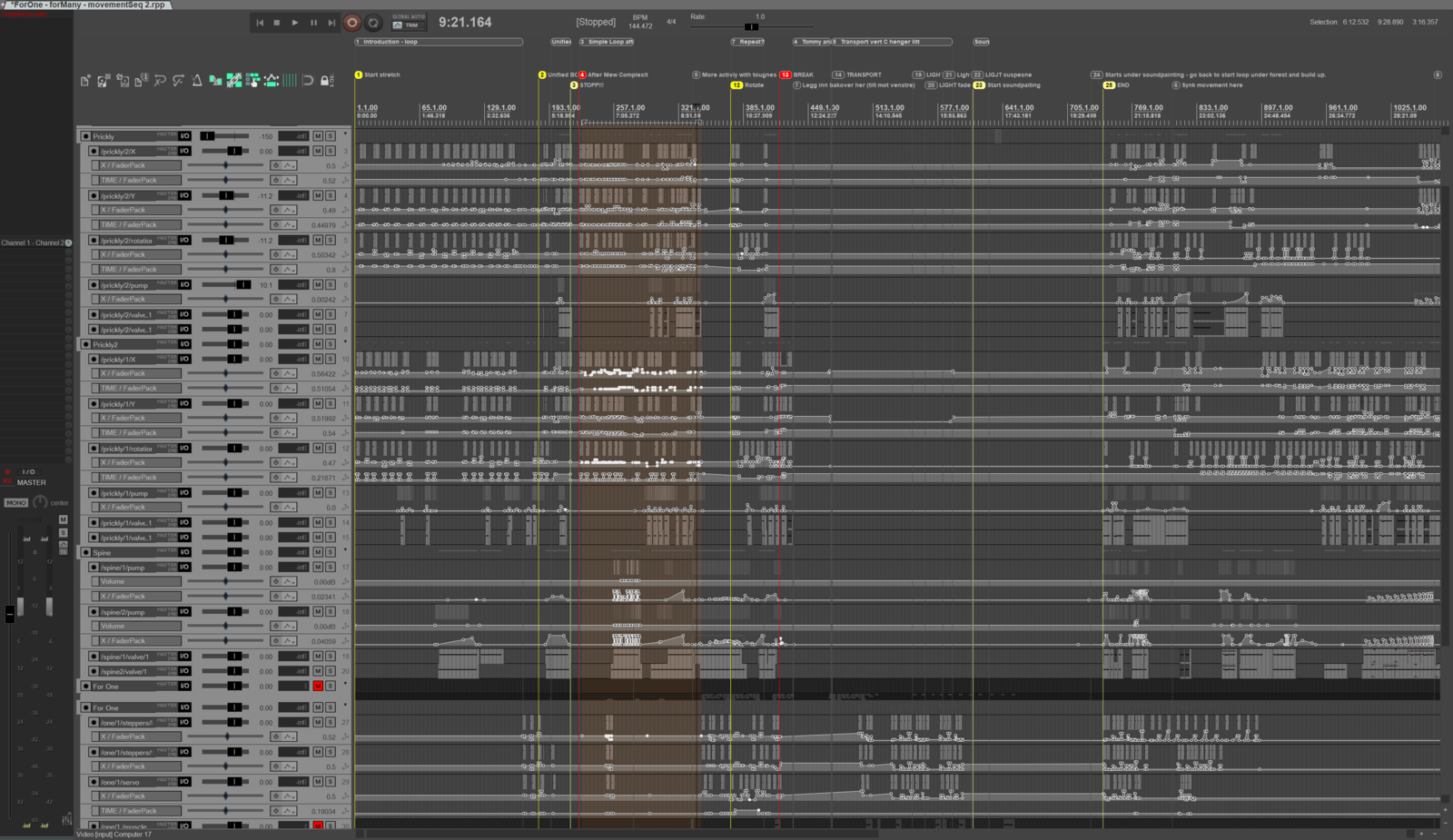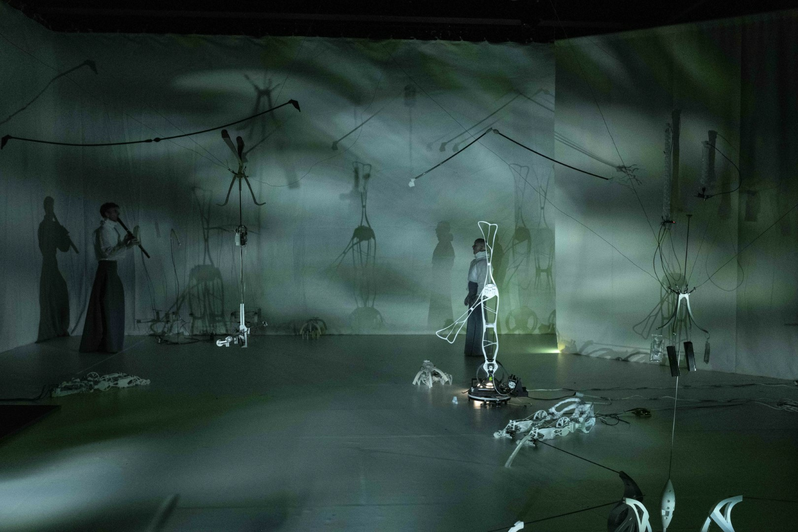Composition and composing
A composition is, in the context of this project, a time-based work featuring animated physical figures combined with other things, including but not limited; to a sonic score, light, text, inanimate objects and physical space. Some compositions also feature human performers. They are snapshots of an ongoing compositional process presented to an audience as a delimited work of art.
Composing is in the context of this project intended as an umbrella term to encompass the entire process of creating artistic output, including but not limited to:
The design of the figures including 'dreaming' of figures(dreaming them up) and what affective response they may impart.
The various stages of prototyping and constructing the figures and their sub-assemblies.
The creation of the sonic score.
Experimentation with movements for figures acting alone or in concert with other figures or human performers.
Considering suitable presentation venues and situations for the compositions.
Making formal considerations when organizing compositional materials in time.
The affordances of technical equipment used in any part of the compositional process.
Writing computer code to be run on the microcontrollers each figure is equipped with.
Developing software systems and communication protocols to communicate with the microcontrollers of each of the figures to allow the time-based organization of their movements.
Placement and movement range of each figure in a performance space.
Position of audience in a performance space.
What, if any, informational material an audience is presented with before or after encountering the composition.
Considerations such as what portion of the audience' encounter with the composition is part of the composition, and which is provided by context. For example, when does it start? Is it when they enter the performance space? Before? When the lights go down? When does it end? When the audience exits? When the composition is no longer featured in the thoughts of the audience?
The time-based organization of materials used in the creation of a composition.
I find the term Composed Theatre as discussed by Matthias Rebstock and David Roesner to be relevant.1 The term describes works that explore musical strategies of organization as viable means of organizing theatrical work. It encompasses works by composers of music that use non-sonic material such as movement, action, text, and light and works by persons working within stage arts employing compositional thinking (as it is generally thought of in a musical context) to organize the same types of materials.
In this project, the term compositional strategy is not primarily intended to mean an approach for organizing pitched and unpitched sounds in time, nor is it concerned with adopting established western musical forms to either organize sonic or non-sonic materials. But there is a substantial concern with perceived tension and release over time that I consider musically motivated.
"The field of interest is characterized by the use of compositional strategies and techniques, these strategies, techniques and ways of thinking are typical of musical composition, and moreover, are applied no longer just to musical material but to such extra-musical materials as movement, speech actions, lighting or whatever you have in the realm of theatre."2
When composing, meaning the totality of tasks involved in developing a composition, I consider my way of thinking to have musical thinking and motivations at its core.
The English word composition has been defined as an "arrangement into specific proportion or relation." 3 It does not only relate to musical composition. The word's meaning depends on which context the term is used, which informs whether it is a musical composition. That context is primarily given by the axiomatic understanding of what constitutes music for the partakers. However, in my case, where I am arranging physical objects, spaces and actions, as well as sounds, it may not be immediately apparent what kind of compositions this project bears forth. I am positive to any interpretation of what kind of compositions they may be. For me, both the compositions and composing them are musically motivated, making them musical compositions, but I am very open to alternative readings.
The movement sequence sent to the Figures performing alongside Jostein Gundersen in For one - for many, Lydgalleriet 13.01.2019. Control system V1.
Movement sequences used in For one - for many - for all using Control system V2.




